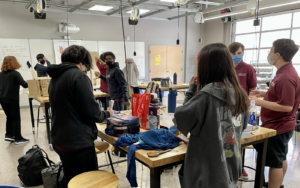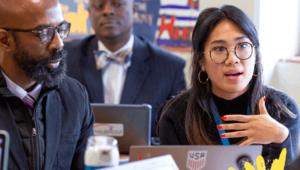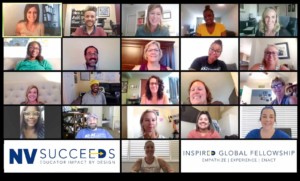Big Levers
There are plenty of theories about how to improve education. Most focus on what appear to be big levers—a point of entry and system intervention that appears to provide some improvement leverage. These theories usually involve ‘if-then’ statements: ‘if we improve this, then other good stuff will happen.’ Leading theories focus on people, schools, policy and community. Nonprofit ecosystems develop around theories, they ebb and flow with foundation interest. Although seldom discussed, leading levers differ substantially in terms of risk and return.
People. Teach for America was an early leader in what is now commonly referred to as the Human Capital agenda in education. With increased federal and foundation attention, alternative certification programs have achieved some scale but still train a fraction of all teachers and leaders.
- Problem addressed: weak talent distribution
- Key assumption: teacher effectiveness is the key variable; more good teachers will improve student achievement
- Risk: low risk especially with proven recruiting and training programs
- Return: low leverage for teacher programs (one announced this week costs $70k/placement), moderate leverage for leadership, potential for sizable impact with sustained investment over time
- Example: Advance Innovative Education, New Leaders for New Schools, New Teacher Project
Schools. Charter schools are the leading representative of the view that ‘good schools will improve the system.’ Proponents usually add a dose of competition and choice to theories about scaled impact. While market share in 14 communities exceeds 20%, national market share of the burgeoning new school development sector serves less than 4% of US students.
- Problem addressed: obsolete school designs with restrictive rules
- Key assumption: good schools are sticky—once they develop a constituency, they’ll be around for a while
- Risk: low risk especially with proven models and operators
- Return: low-moderate leverage (funders bet on moderate returns given optimistic assumptions about competition, scale, and diffusion)
- Examples: Achievement First, Aspire, Green Dot, KIPP
Policy. A growing number of think tanks and advocacy groups are attempting to nudge the Gordian knot of policy in a slightly more positive and coherent direction.
- Problem addressed: three-tiered mess of American education policy
- Key assumption: a smart investment in advocacy can yield big returns
- Risk: high risk of little or no progress, possible unintended consequences
- Return: high leverage if successful; opportunity to change the opportunity set for millions of students
- Example: EdTrust, Democrats for Education Reform, Education Equality Project, EdSector, ConnCAN
Community. A small number of diehards attempt to organize community support or community services for better schools.
- Problem addressed: underserved communities are disenfranchised
- Key assumption: organizing creates power for change (and/or schools can’t do it alone)
- Risk: transitory support and high risk of bureaucratically thwarted efforts
- Return: moderate-high leverage if support can be built around key opportunities
- Example: Communities in Schools, Parent Revolution, PICO, Parent Organizing Consortium
You could add ‘data’ to the lever list, but given the wide recognition of its importance, better data is usually incorporated into strategies in each category. You could add ‘systems’ approaches but they are usually cobbled together bundles of these four—more community for the left-leaning foundations, more choice for the right.
One problem not addressed by these theories is the lack of innovation diffusion in education—a good idea won’t cross the street. Weak improvement incentives and strong bureaucracy have created a lousy marketplace for products and ideas.
In other sectors, platforms have proven to be a big lever: iTunes for music, Wal-Mart for consumer goods, Windows for computers. Platforms combine a set of technologies—including some we didn’t know we needed that instantly become indispensible—into a disruptive value engine.
I’m betting on social learning platforms as a lever for improvement at scale in education. Instead of a classroom as the primary organizing principle, social networks will become the primary building block of learning communities (both formal and informal). Smart recommendation engines will queue personalized content. Tutoring, training, and collaboration tools will be applications that run on social networks. New schools will be formed around these capabilities. Teachers in existing schools will adopt free tools yielding viral, bureaucracy-cutting productivity improvement.
In the coming decade, most middle and high schools will adopt some version of 1:1 technology, online learning will play an increasingly roll, and learning experiences will be conducted and coordinated on social learning platforms. While adoption won’t be simple and smooth, it will cut through the typical barriers that block other reforms.
The platforms that get big will have a business model behind them. Foundations will contribute to niche platforms and apps, but the big platforms will be dot coms not dot orgs. There’s no stopping it and that’s the beauty of disruptive innovation.








0 Comments
Leave a Comment
Your email address will not be published. All fields are required.